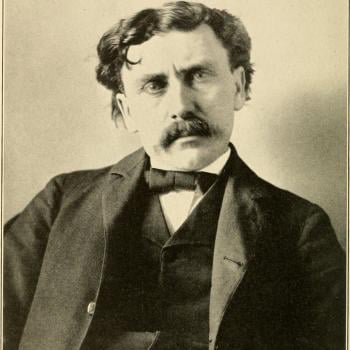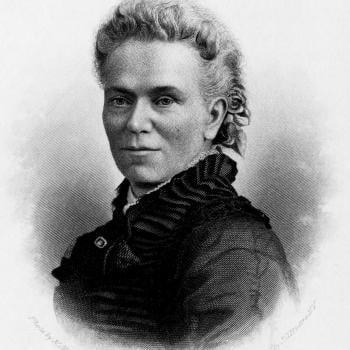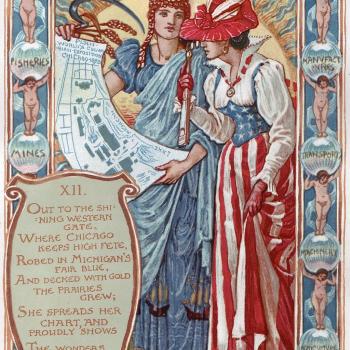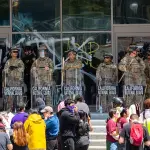The Economist just published an article that on its surface said nothing about religion or religious trends, but the implications for that topic are huge. Let me put the argument out there for discussion.
The article is called “Free Exchange: Economists Grapple With Rising American Mortality” (January 9, paywalled). The main topic is “deaths of despair,” as “A growing share of middle-aged white Americans, especially those without college degrees, are dying from suicide and drug and alcohol use.” This is a very important topic, which demands discussion: opioid abuse plays a large part in the story. But the column also offers a significant context, citing the work of Robert Putnam. In his 2000 Bowling Alone, Putnam suggested that the US was suffering a long term decline in social capital, which had previously been reflected in the great vigor of civic and community associations, everything from Masonic and fraternal societies to bowling leagues. Lacking those connections, networks, and support systems, Americans slide more to anomie and alienation.
Let me offer a relevant word here. In the eighteenth century, Samuel Johnson was famously called the most clubbable man in London, meaning he was so sociable, so oriented to social interaction and exchange. Bowling Alone is about the decline of that whole concept of the “clubbable.” We just don’t join clubs any more, and society as a whole suffers.
That argument has acquired a kind of classic status. But now here is the update, which Putnam will expound in a forthcoming book (which I do not yet see showing on Amazon):
For a range of variables, including income equality, cross-party political collaboration, labor-union membership, community involvement and marriage rates, there was a rise from the beginning of the 20th century into the 1960s, followed by a plateau and decline. (The same arc is found for the use of the word “we” relative to “I” in books published in American English.) It seems possible, Mr. Putnam said, that the challenges of the first half of the century, from the power of industrial monopolies to depression and war, prompted a cultural response in which Americans thought and acted more as a group. Over the past half-century, however, they seem to have reverted to a more atomized condition.
He is arguing for a systematic “weakening of collective institutions and sentiments,” and sees that as a major source of the “mortality epidemic.”
I have no idea how far religion is going to feature in Putnam’s new book, but the potential is enormous. Let me offer my own speculative take on this (Putnam should take no blame for anything that follows).
Before the 1960s, say, it was easy and natural to join a church or synagogue, just as you signed up for any other kind of social organization. It was what “we” in this community did, part of what makes us a collective us. We were clubbable, and churchable (a word I have just invented). More recently, that is simply not the case. When churches decline, it’s not so much a matter of theology, or morality debates, or anger at the behavior or attitudes of particular churches or their hierarchies. Rather, we have become non-joiners, non-participators. Successful institutions adapt to that as best they can. Megachurches offer a great example in the very varying degree of commitment they offer and demand, for different kinds of people. Also, note how the most successful such churches offer so many services and community functions that people can no longer find anywhere else.
Highly relevant to this story is the growth of the much-publicized Nones, which is mainly a phenomenon of the present century. Let me say again that, despite much media incomprehension, Nones are not necessarily people who reject belief, and they might actually be quite religious in their attitudes. What marks them off is that they refuse any kind of affiliation with a religion or religious denomination. Presently, America’s Nones constitute a population roughly akin to evangelical Protestants in number, and they now outnumber Catholics. We can tell this story as one of secularization, but it is rather one of isolation, of non-joining, of a rejection of us-ness. Large sections of the population have given up being churchable.
The other part of the larger story is that people do indeed seek community ties and us-ness, but now they mainly find those things on the Internet. At its worst, this quest manifests through the shrieking of Twitter mobs, which coalesce almost randomly, express deep and passionate solidarity on particular causes, and then dissipate. We still become “us,” however temporarily, but with a total lack of physical presence. Collective institutions and sentiments are still there, but in a radically different form.
Finally, I’d love to see how demography features in Putnam’s argument. That decline of us-ness coincides neatly with a shrinking of fertility and a move away from concepts of family. But which comes first? Do people lose interest in a world outside themselves, and fail to form families? Or does the family decline cause the isolation and alienation?
On one probably minor note. Just to return to an old hobby-horse of mine, we might also pay some attention to military service and the draft, which from 1940 through the early 1970s did a lot to promote collective identities and awareness.
I will be very interested to read Putnam’s next work when it appears – and also any reports of how he develops his argument over time. His theoretical approach may well be critical for understanding the shape of American Christianity, present and near-future.













